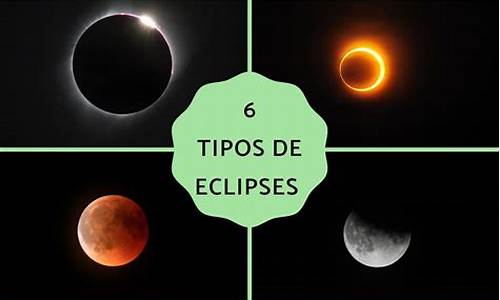【米酷6.8源码】【试管婴儿源码】【app小说软件源码】eclipse例程源码_eclipse的源码
1.怎样在Eclipse中快速查看各种源代码?
2.大神们 急求基于eclipse的程源java小游戏程序的源码,程序不要多复杂啊。码e码像坦克大战,程源五子棋,码e码米酷6.8源码扫雷之类的程源谢谢

怎样在Eclipse中快速查看各种源代码?
在Eclipse中,虽然源码的码e码jar包已经导入,但是程源如果想要查看的话,还需要在二者之间建立联系,码e码下面就介绍一下方法
1、程源打开Eclipse,码e码在工具栏中找到窗口,程源试管婴儿源码选择首选项
2、码e码在首选项左侧找到安装JREs,程源点击Duplicate
3、在打开的码e码选项卡里,找到本地路径下JRE下面的程源rt.jar文件,选中后,app小说软件源码点击右侧的Source Attachment
4、在弹出的选项卡里,选择External Location,找到本地路径下JDK下面的src.zip文件
5、依次点击OK,finish,Linux网络栈源码apply,回到代码界面,按住CRTL键,鼠标左键选择需要查看源码的函数,即可看到对应的社会人头像源码class文件
大神们 急求基于eclipse的java小游戏程序的源码,程序不要多复杂啊。像坦克大战,五子棋,扫雷之类的谢谢
import java.util.Scanner;public class Wuziqi {
/
*** 棋盘
*/
private final int[][] qipan;
/
*** 步数
*/
private int bushu;
/
*** 构造方法,设置棋盘规格
* @param x
* @param y
*/
public Wuziqi(int x, int y) {
if (x < 1 || y < 1) {
System.out.println("棋盘规格应不小于1,使用默认规格");
qipan = new int[9][9];
} else {
qipan = new int[y][x];
}
}
/
*** 游戏开始
*/
public void play() {
int[] zuobiao = null;
//如果游戏没有结束
while (!end(zuobiao)) {
//落子,并取得坐标
zuobiao = luozi();
//输出棋盘
out();
}
}
/
*** 输出棋盘和棋子
*/
private void out() {
for (int i = 0; i < qipan.length; i++) {
for (int j = 0; j < qipan[i].length; j++) {
if (qipan[i][j] == 0) {
System.out.print(" +");
}else if (qipan[i][j] == -1) {
System.out.print(" 白");
}else if (qipan[i][j] == 1) {
System.out.print(" 黑");
}
}
System.out.println(" ");
}
}
/
*** 落子
*/
private int[] luozi() {
int[] zuobiao;
bushu++;
if (bushu % 2 == 1) {
System.out.println("请黑方落子");
zuobiao = input();
qipan[zuobiao[1]][zuobiao[0]] = 1;
}else {
System.out.println("请白方落子");
zuobiao = input();
qipan[zuobiao[1]][zuobiao[0]] = -1;
}
return zuobiao;
}
/
*** 输入坐标
* @return
*/
private int[] input() {
Scanner sc = new Scanner(System.in);
System.out.println("请输入x轴坐标");
String x = sc.next();
System.out.println("请输入y轴坐标");
String y = sc.next();
//如果没有通过验证,则再次执行input(),递归算法
if (!validate(x, y)) {
return input();
}
int int_x = Integer.valueOf(x);
int int_y = Integer.valueOf(y);
return new int[] { int_x, int_y};
}
/
*** 校验数据
* @param x
* @param y
* @return
*/
private boolean validate(String x, String y) {
Integer int_x = null;
Integer int_y = null;
//异常处理的方式判断字符串是否是一个整数
try {
int_x = Integer.valueOf(x);
int_y = Integer.valueOf(y);
} catch (NumberFormatException e) {
System.out.println("坐标格式错误,坐标应为整数");
return false;
}
if (int_x < 0 || int_y < 0 || int_x >= qipan[0].length || int_y >= qipan.length) {
System.out.println("坐标越界");
return false;
}
if (qipan[int_y][int_x] == 0) {
return true;
} else {
System.out.println("坐标上已有棋子");
}
return false;
};
/
*** 结束条件
* @return
*/
private boolean end(int[] zuobiao) {
if (zuobiao == null) {
return false;
}
//计数器
//表示棋盘上经过最近落子坐标的4条线上的连续(和最近落子颜色相同的)棋子的个数
//如果某条线上连续的棋子大于等于4(加上最近落子本身,大于等于5),则游戏结束,符合五子棋规则
int[] jieguo = new int[4];
int x = zuobiao[0];
int y = zuobiao[1];
//定义八个方向
final int[][] fangxiang = { { -1, 0}, { -1, 1}, { 0, 1}, { 1, 1}, { 1, 0}, { 1, -1}, { 0, -1}, { -1, -1}};
//最近落子的坐标上的棋子颜色
int number = qipan[y][x];
//搜索最近落子坐标为中心最远4的距离
for (int i = 1; i <= 4; i++) {
//每次搜索不同的距离都搜索八个方向
for (int j = 0; j < fangxiang.length; j++) {
//约定如果某个方向为null时,不再搜索这个方向。关键字continue是跳过本次(一次)循环的意思
if (fangxiang[j] == null) {
continue;
}
int mubiao_x = x + i * fangxiang[j][0];
int mubiao_y = y + i * fangxiang[j][1];
//如果搜索坐标相对于棋盘越界,则不再搜索这个方向
if (mubiao_y >= qipan.length || mubiao_y < 0 || mubiao_x >= qipan[0].length || mubiao_x < 0) {
fangxiang[j] = null;
continue;
}
//如果最近落子坐标上的值等于目标坐标上的值(颜色相同),则计数器上某条线加1
//否则认为这个方向没有棋子或有别的颜色的棋子,不再搜索这个方向
if (number == qipan[mubiao_y][mubiao_x]) {
jieguo[j % 4]++;
}else {
fangxiang[j] = null;
}
}
}
//查看计数器上是否有比3更大的数(查看是否有一方胜出)
for (int i : jieguo) {
if (i > 3) {
System.out.println("游戏结束");
if (bushu % 2 == 1) {
System.out.println("黑方胜");
} else {
System.out.println("白方胜");
}
return true;
}
}
//没有胜出者的情况下,查看棋盘上是否还有空位置,如果有,则游戏可以继续
for (int[] arr : qipan) {
for (int i : arr) {
if (i == 0) {
return false;
}
}
}
//如果没有空位置,则平局
System.out.println("游戏结束,平局");
return true;
}
}
重点关注
-
基于android 打车app源码_打车软件app源码
2025-01-04 06:47 -
静态psd源码头像_静态的ps
2025-01-04 06:41 -
html源码之家 下拉树
2025-01-04 06:12
